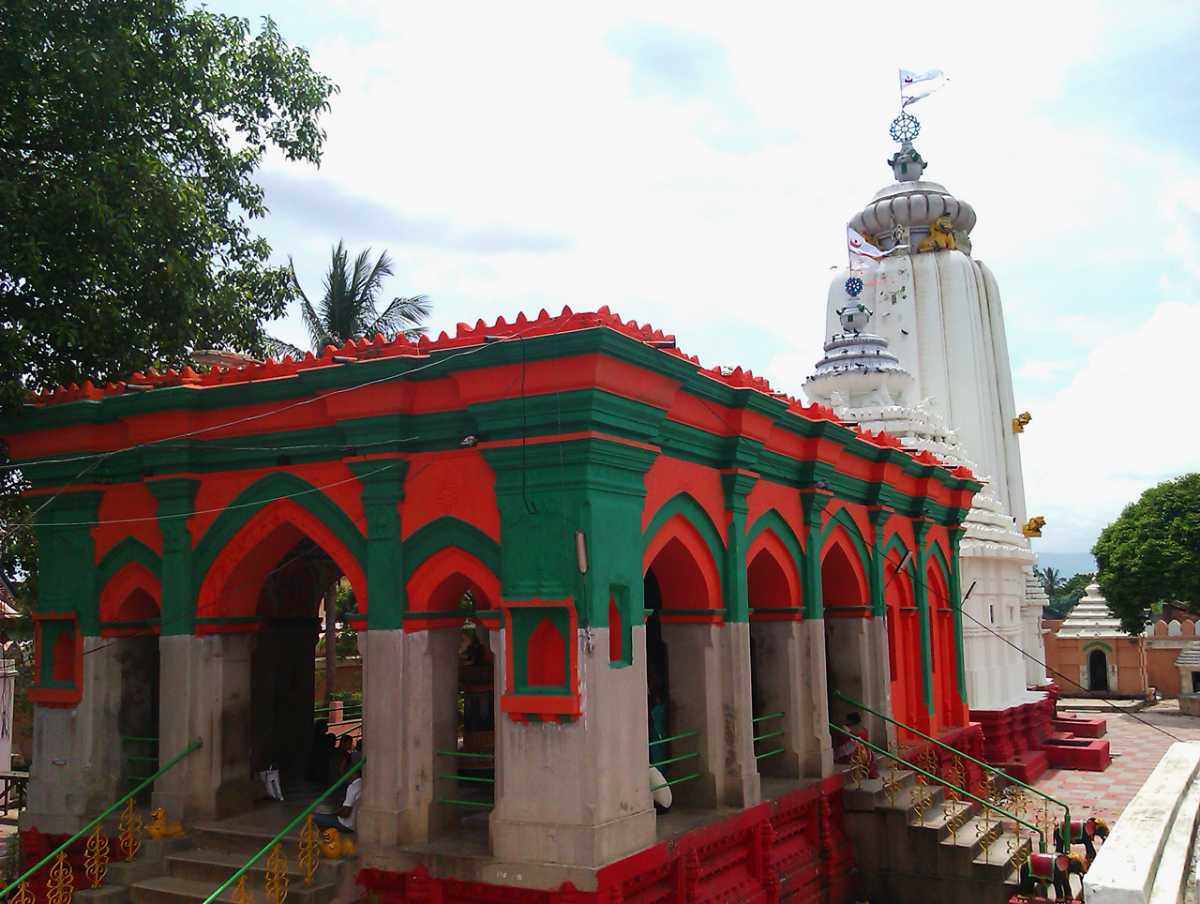
History of Jagannath Temple
After the death of Raja Baidyanath Bhanja, when Raja Harihara Bhanja came to power, he decided to start the construction of the Sri Jagannath Temple. Its construction was completed around 1630 A.D. According to mythological accounts, Raja Harihara Bhanja once decided to visit Puri to seek the blessings of Lord Jagannath. However, he was asked to pay gold coins for the same, and when he failed to do so, he was denied the privilege of having the darshan of the deity. He then went to Puri with his entire accompaniment but was still refused to enter the temple as he showed lesser supremacy than the king Gajapati.
Raja Harihara Bhanja then worshipped the Lord from the Atharnala Bridge itself. While he was returning to the royal palace, the kind dreamed that Lord Jagannath had himself appeared before him and asked him to build a temple in his dedication at Baripada itself, so that all his devotees could worship him there itself, and that is how the idea of the temple struck Raja Harihara Bhanjas mind.
Architecture of Jagnnath Temple
Constructed in the Gaudiya style of architecture, the temple of Jagannath is made up entirely of Laterite stone. Standing 84 feet tall, the temple is enclosed by a huge boundary wall that encloses it. Complete with several pillars and images, it also has structures of the deities situated at various corners of its premises. One can also find a Nata Mandir inside the temple complex, which is adorned with different images of gods and has great mythological importance.
In fact, this temple of Lord Jagannath is believed to be a replica of the temple that is located in Puri. Over a few years, however, time showed its supremacy and the artistic decorations on the outer walls of the temple lost their original beauty. Also, with the demolishing of the temple, the image of Lord Jagannath which was originally placed in the temple, was shifted to Pratapapur.
Deities Worshipped at Jagannath Temple
The main deities of the Sri Jagannath Temple are Lord Jagannath, Lord Balabhadra and Goddess Subhadra, and the idols of all three are situated in the temple premises. Along with these, the idols of several other deities, such as that of the seventeen Bedha, can also be found in the temple of Lord Jagannath. The compound of the Jagannath temple comprises of numerous tiny cells that have the images of various religious findings of the place. Several such idols include those of Lord Umamaheswar and Paraswanath. One can also find the image of Jambhal of the Buddhist religion inside the temple, along with the idol of Lokeswar Bodhisattwa.
Jagannath Temple Rath Yatra
The Rath Yatra, also known as the Car Festival, is celebrated with great zeal and passion in the temple and holds the second position after the Rath Yatra of Puri. This festival lasts for nine days and imbues all with religious fervour. Three huge chariots of Lord Jagannath, Lord Balabhadra and Devi Subhadra are carried through the town, and devotees flock in large numbers from near and far to touch the rope of the Lord's chariot, since it is believed that doing so will free them from the cycle of birth and rebirth.
The construction of the colossal chariot, which is a central part of this religious festivity, begins on the Akshaya Tritiya (Shukla Trutiya of Baishakha) day, and the remaining schedule is as follows: The Netra Mahottsava is performed on the Amavasya of the Krushna Pakshya of the Ashadha month. The Uvayatra Utsava takes place on the Shukla Pratipada of the Ashadha month. The Pahandi Bije is performed on the Dwitiya of the Ashadha Shukla. The Chariots Pulling ceremony begins on the Trutiya and the Chaturthi of the Ashadha month. The Bahuda Jatra is the Returning Ceremony, which is performed on the Ekadashi of the Ashadha Shukla. The Pulling Chariots on Bahuda Jatra occurs on the Dwadashi and the Trayodasi of the Ashadha masa.
The three deities arrive on their chariots, and the pulling of these chariots begins on the next day. The chariot of Lord Balabhadra is the first to move and reach the Mausi Temple, which is followed by the pulling of Devi Subhadra's chariot, which is done only be females. The grandest and largest of all chariots with sixteen wheels, which belongs to Lord Jagannath then begins to move. Once the chariot pulling is completed, there is no space for the chariots to move around, and hence the reverse order is followed on the return journey.
Best time to visit Jagannath temple
The best time to plan a trip to the Sri Jagannath Temple is in the winter months from October to March when the weather is the most friendly and pleasant.
How to Reach Jagannath temple
The Sri Jagannath Temple can easily be reached by booking a private vehicle from any part of Baripada.
Top Tourist Places in Baripada
Palace of Mayur Bhanj
Jwala mukhi temple
Jagannath temple
Chandipur market
Baripada museum
All Tourist Places in Baripada
Comments on Jagannath temple
Post Your Comment




